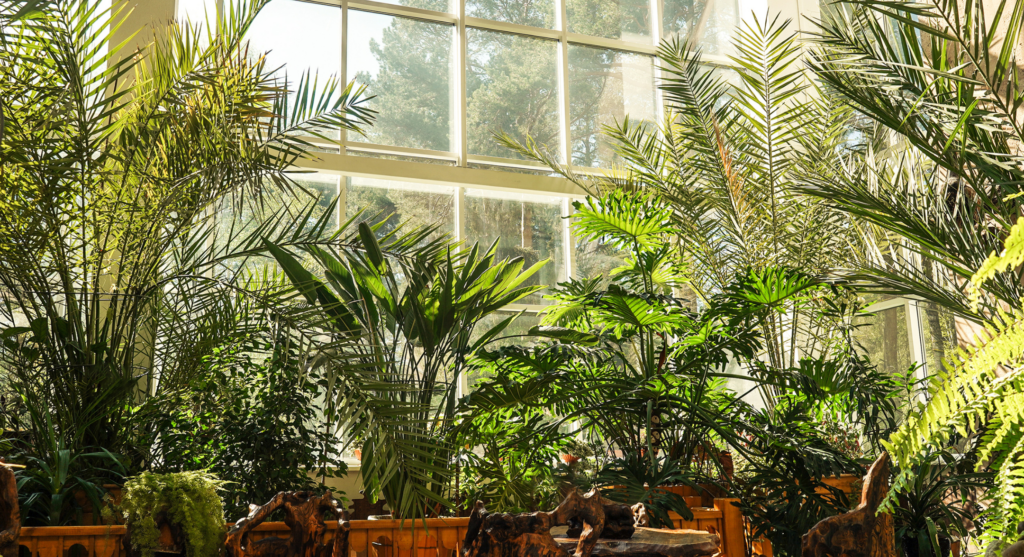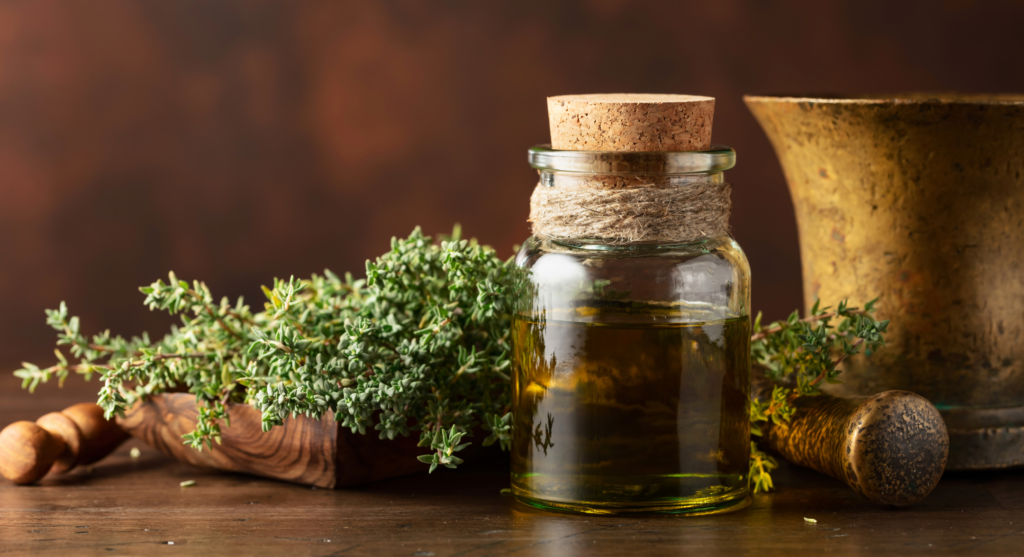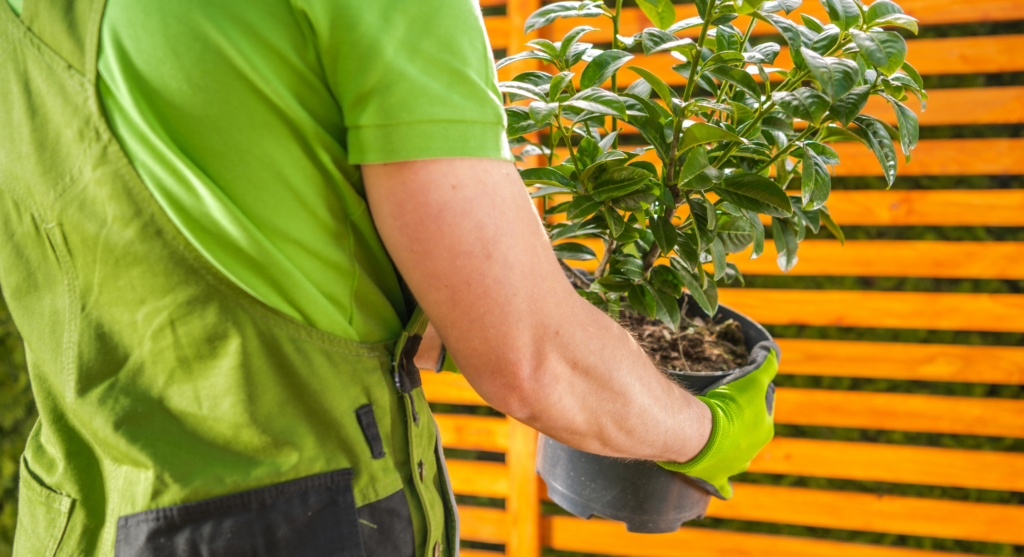In an increasingly urban and industrialized world, maintaining air quality in indoor environments has become an essential challenge for well-being and health. Therefore, the presence of pollutants from cleaning products, synthetic materials, paints and furniture can compromise the quality of the air we breathe at home or at work. In this way, plants that purify the air stand out not only for their beauty and decorative capacity, but mainly for their properties of filtering toxins and improving humidity, contributing to a more balanced and healthy environment. Therefore, this article aims to deepen knowledge about how plants act to purify the air, what benefits they offer, which species are most suitable for different environments and the essential care to keep them healthy and productive.
How Do Plants Purify the Air?
Initially, it is important to understand that plants have a natural mechanismfor cleaning the air known as phyto-remediation. First, this process occurs in a simple and efficient way, being divided into two main stages:
Pollutant Absorption
First, the leaves and roots of plants absorb various pollutants present in the environment. During the process of photosynthesis, plants capture carbon dioxide (CO₂) and, consequently, release oxygen (O₂). In addition, they can also absorb toxic substances, such as benzene, formaldehyde, carbon monoxide, xylene and other volatile organic compounds (VOCs). Thus, pollutants are integrated into the plant’s cellular structure, where they can be transformed into less harmful substances or even used as a source of nutrients.
Action of Microorganisms and Transpiration
In addition, another important factor is the action of microorganisms present in the rhizosphere (the root region). In this way, these microorganisms help to decompose pollutants, transforming them into nutrients that the plant itself can absorb. Likewise, the transpiration process – that is, the release of water vapor by the leaves – also helps to increase the humidity of the environment, thus contributing to the reduction of respiratory problems and dry skin. Therefore, studies carried out by NASA in the 1980s proved that some plant species are highly effective in removing toxic substances from the air. In short, these studies not only demonstrated their purification capacity, but also boosted interest in using plants as a sustainable solution to improve the quality of the indoor environment.
Benefits of Plants in the Indoor Environment
In general, the incorporation of purifying plants in indoor environments offers a series of benefits that go far beyond aesthetics. Below, we have separated the benefits into two groups to make them easier to read:

Health Benefits
Air Quality Improvement
First, plants act as toxin filterers. By absorbing harmful compounds, plants reduce the concentration of pollutants in the air, improving its quality and making it healthier to breathe. In addition, during the process of photosynthesis, plants release oxygen, which is essential for the health and well-being of residents. On the other hand, specific species can remove volatile organic compounds (VOCs) released by furniture, carpets, and cleaning products. In short, the presence of plants contributes significantly to air purification.
Increasing Humidity
In addition to improving air quality, plants also help to increase the humidity of indoor environments. In this way, they prevent dryness, which is particularly important in places with air conditioning or central heating. Consequently, the humidity generated by plant transpiration helps to create a balanced microclimate, especially in regions with dry climates. This makes the environment more comfortable and healthy.
Improved Sleep Quality
In addition, some plants have the ability to release oxygen during the night, which can contribute to a deeper and more restful sleep. In particular, species such as lavender and aloe vera are known for their calming effects, which promote an environment conducive to rest. Consequently, sleep quality can be improved, resulting in benefits for the mental and physical health of residents.
Emotional and Aesthetic Benefits
Calming Effect and Stress Reduction
Therefore, the presence of plants indoors has a calming effect and can significantly reduce stress. In fact, contact with nature, even indoors, promotes a feeling of well-being and tranquility. For example, studies show that environments decorated with plants tend to reduce anxiety and improve mood. Therefore, this characteristic can be considered a form of natural therapy, especially in workplaces where stress is high.
Contribution to Aesthetics and Decoration
Finally, we cannot fail to mention the aesthetic aspect of plants. Naturally, they add a touch of beauty and life to any environment. In addition, plants are extremely versatile and can be used in many ways in decoration – in pots, hanging, in vertical gardens or as centerpieces. In this way, they add aesthetic value to spaces, making them more welcoming and harmonious.
Main Plant Species that Purify the Air
To illustrate, below are some of the most recommended species for purifying the air in indoor environments:

Sansevieria trifasciata (Sansevieria trifasciata)
Initially, it is important to highlight that the snake plant is known for its incredible resistance. In short, it has rigid, pointed leaves with stripes that range from dark green to yellow. Furthermore, this plant is extremely efficient in removing toxins such as formaldehyde, benzene and xylene. Therefore, it is ideal for environments with little light, as it tolerates adverse conditions and periods of drought. In short, snake plant is an excellent choice for those looking for practicality and efficiency.
Jiboia (Epipremnum aureum)
In addition, the snake plant is widely recognized for its ease of maintenance and the exuberance of its heart-shaped leaves. Therefore, this plant is ideal for growing in pots or even hanging, creating a very attractive decorative effect. Furthermore, the snake plant is excellent for eliminating toxins, such as xylene and benzene, contributing to a cleaner environment. Therefore, it is highly recommended for various types of environments.
Peace Lily (Spathiphyllum)
Next, we have the peace lily, which stands out not only for its beauty, but also for its functionality. On the other hand, it is efficient in removing volatile organic compounds (VOCs), which makes it ideal for indoor environments. In addition, the peace lily displays glossy green leaves and elegant white flowers, making it a highly appreciated decorative element. Therefore, it is a great choice for those looking to combine aesthetics and health.
Bamboo palm (Chamaedorea seifrizii)
Likewise, the bamboo palm brings a tropical and elegant touch to any environment. Therefore, it is ideal for improving air humidity and removing pollutants, such as ammonia and formaldehyde. Thus, this species is highly valued both for its beauty and for its purifying properties. Therefore, the bamboo palm is a good choice for those who want a more natural environment.
Aloe vera
In addition, aloe vera is widely known for its medicinal properties, but we cannot forget its purifying capabilities. In this way, it helps to remove toxins present in cleaning products and construction materials. In addition, aloe vera is extremely resistant, requiring minimal care and preferring environments with indirect light. Therefore, it proves to be a practical and effective option.
Fern (Nephrolepis exaltata)
Furthermore, the fern deserves to be highlighted for its exuberance and efficiency in removing pollutants. In particular, its finely cut leaves help to regulate the humidity of the environment, which is especially beneficial for people with respiratory problems. In addition, the fern requires high humidity and frequent watering, which reinforces the need for special care. Therefore, it is an excellent choice for environments that can offer the necessary conditions.
Dracena (Dracaena marginata)
Furthermore, the dracaena stands out for its long and elegant leaves, which can have red or yellow stripes. In short, it is very effective in eliminating toxins present in urban environments, such as formaldehyde and benzene. Consequently, the dracaena is a popular option for offices and living rooms. In this way, it combines aesthetics and functionality in an exemplary way.
Ficus (Ficus benjamina)
In addition, the ficus is an excellent option for indoor environments, especially in offices and living rooms. On the other hand, it absorbs pollutants released by furniture and paints, contributing to improving air quality. In this way, the ficus not only beautifies the environment, but also makes it healthier. Thus, it is a very versatile choice.
English Ivy (Hedera helix)
Finally, English ivy is very effective in reducing mold and removing contaminant particles. In particular, it is ideal for environments such as bathrooms and kitchens, where humidity can favor the growth of fungi. Therefore, English ivy is a great option to improve air quality in these spaces.
Other Interesting Species
Additionally, other species can also be incorporated to enhance air purification and add beauty to the environment. For example, the Adam’s rib (Monstera deliciosa), known for its lush, jagged leaves, contributes significantly to the removal of toxins. In addition, the calla lily (Spathiphyllum wallisii) displays charming white flowers and has a similar performance to the peace lily. Furthermore, the Areca palm (Dypsis lutescens) not only improves humidity, but is also ideal for larger spaces, such as large rooms or offices.
Essential Care for Keeping Plants Healthy
Therefore, for plants to maintain their purification capacity and develop fully, it is essential to adopt some basic care. First, check out the following guidelines:

Watering Adequate
First of all, it is important to avoid overwatering, as this can lead to root rot. Thus, each species has a specific need, and for this reason, it is essential to know the watering habits of each plant. In addition, use well-drained soil and check the moisture before watering. Therefore, many times the plant only needs a light moistening of the soil.
Correct Lighting
Furthermore, the choice of lighting is crucial for the development of plants. While some species do best in indirect light (like the snake plant and peace lily), others can benefit from direct sunlight (like the aloe vera). So, position your plants according to their needs. Similarly, even plants that tolerate low light need some natural light, so if your environment is too dark, consider using grow lights.
Maintenance and Cleaning
Consequently, regular maintenance is essential to keep plants in good condition. For example, dust and dirt can clog the pores of the leaves, reducing the efficiency of pollutant absorption. Therefore, it is recommended to clean the leaves with a damp cloth or a water spray bottle, always carefully. In addition, regular pruning helps to stimulate growth and keep the plant looking healthy and organized. Thus, these practices ensure that the plant continues to perform its purification function.
Fertilization and Nutrients
Finally, it is important to provide the plants with the appropriate nutrients. Therefore, use organic fertilizers or homemade compost to provide the necessary nutrients without harming the plants with chemicals. Furthermore, during periods of active growth – generally in spring and summer – fertilization should be more frequent. On the other hand, in winter, reduce the amount of water and fertilizer, as the plant enters a period of dormancy. In short, proper fertilization is vital to keep plants healthy and productive.
Extra Tips and Curiosities about Air Purifying Plants
In addition to basic care, there are some extra tips that can enhance the beneficial effects of plants in your environment. First, consider the following recommendations:
- Functional Decoration: In addition to being efficient in purifying the air, plants can be used to beautify environments. For example, vertical gardens are a great option for small spaces, as they optimize the use of walls and provide a charming view.
- Strategic Positioning: Therefore, distribute the plants so that they can act in a complementary way. Thus, place a species that prefers environments with little light in more shaded places and another that requires more light in areas close to windows.
- Care Routine: Consequently, creating a weekly routine to check the watering, pruning and cleaning conditions of the plants is essential. In this way, this practice not only keeps the plants healthy, but also allows you to quickly identify if there are signs of pests or diseases.
- Psychological Benefits: On the other hand, studies show that contact with nature can significantly reduce stress and improve quality of life. Thus, having plants nearby provides moments of relaxation and introspection, improving mood and willingness for daily activities.
Scientific Evidence and Studies on Air Purification
Remarkably, the effectiveness of plants in purifying the air is not just a popular belief, but is also backed by scientific evidence. For example, one of the most well-known studies was conducted by NASA, which analyzed the ability of various species to remove volatile organic compounds and other pollutants. Therefore, the results proved that plants such as snake plants, peace lilies and English ivy have outstanding performance in this regard.
In addition, other research carried out at universities and research centers corroborated these findings, demonstrating that the presence of plants in indoor environments can significantly reduce the concentration of toxins and improve the well-being of occupants. In short, these studies reinforce the importance of using plants as a sustainable solution for air purification.
Environmental Impact and Sustainability
In addition, the use of air-purifying plants contributes to the sustainability of urban environments. In the face of accelerated urban growth and increased pollution, incorporating natural elements into indoor spaces helps to create a more balanced and healthy atmosphere. In this way, this practice not only benefits individuals, but also generates a positive impact on the environment, reducing the need for artificial air purification systems and promoting a more harmonious coexistence between man and nature.
Integration of Plants with Decoration
Therefore, the trend of using plants in decoration goes beyond the functional aspect and has become an aesthetic differential in several interior design projects. In addition, architects and interior designers have explored the versatility of plants to create environments that convey tranquility and modernity.
Ideas for Indoor Gardens and Arrangements
First of all, consider the possibility of creating vertical gardens, which are ideal for small spaces. In this way, vertical gardens optimize the use of walls and provide a charming view, while distributing humidity evenly throughout the environment. Additionally, small plants arranged on tables, niches or shelves add a natural touch to the decor and can be combined with elements such as decorative stones and handmade vases. Therefore, the variety of textures and colors of the leaves contributes to interesting and dynamic visual compositions, making the environment more personalized.
Tips for Choosing the Right Plants
On the other hand, it is essential to know the environment before choosing the species. Therefore, observe the incidence of natural light, the temperature and humidity of the place, as these factors are decisive for the survival and performance of the plants. In addition, try to integrate plants that offer purification benefits with those that complement the decorative style of the environment. This way, you ensure a healthy space without sacrificing aesthetics. Finally, choose species that suit the available space, as large plants can dominate small spaces, while smaller plants are ideal for tables and shelves.

Conclusion
In short, incorporating plants that purify the air into indoor environments is a simple and effective strategy to transform everyone’s quality of life and well-being. Firstly, by absorbing toxins, increasing humidity and releasing oxygen, plants play a crucial role in improving the quality of the air we breathe. In addition, they contribute to decoration, bringing beauty, life and a touch of nature to everyday life.
Therefore, adopting a care routine that includes adequate watering, correct exposure to light, regular cleaning of the leaves and periodic fertilization is essential to ensure that these plants perform their function fully and sustainably. Furthermore, with several recommended species – such as snake plant, snake plant, peace lily, bamboo palm, aloe vera, fern, dracaena, ficus and English ivy – there is an option for all types of environments and decoration styles. Therefore, whether for your home, office or any other space, investing in plants that purify the air is a choice that combines health, sustainability and aesthetics.
Therefore, with small changes in decoration and care for the environment, it is possible to create a healthier, more harmonious space full of well-being. In this way, you can transform your environments and enjoy the countless benefits that nature can offer. In short, a greener environment means a healthier and happier environment.
Final Thoughts
In conclusion, investing in plants that purify the air goes far beyond simple decoration. In fact, it is a conscious choice that benefits both the health of residents and the environment. At a time when air quality is increasingly compromised by urban pollutants, bringing nature into your home is a gesture of care and respect for yourself.
Therefore, each plant has its own particularities and needs, and knowing them is essential to ensure that they can perform their role efficiently. In this way, by integrating natural mechanisms for absorbing toxins and contributing to a balanced microclimate, plants demonstrate that nature has simple and effective solutions to problems that often seem complex.
We hope that this article has provided valuable and practical information so that you can choose, care for and enjoy the benefits of plants that purify the air. Consequently, transform your environments, improve your quality of life and be inspired by the beauty and wisdom of nature.
In short, adopting these practices and including purifying plants in your daily life is an important step towards a healthier, more sustainable lifestyle that is in harmony with the environment. In this way, may this content inspire you to transform your spaces and enjoy all the benefits that plants can provide.

